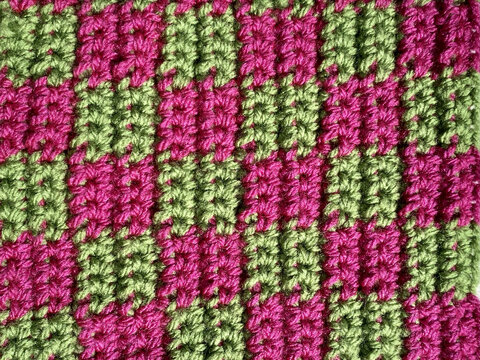Impact in Qualitative Research: Gemma McKenzie on human rights in childbirth

Dr Gemma McKenzie is an ESRC postdoctoral fellow at King's, where she works on creative methods and violence in the medical treatment of pregnancy and childbirth. This follows her PhD study of freebirthing – deciding to give birth without input from clinicians – in the UK. In this blog post she discusses how she came to be producing an art exhibition titled “Threads of protest” coming up next year.
A brief content note: this piece contains details of institutional violence against women and those women’s occasionally graphic responses.
In Germany, in the early twentieth century, women could be committed to so called ‘insane asylums’ by their male relatives for a host of spurious reasons. Harsh discipline and primitive treatments led to many inmates producing creative outputs through sheer desperation and frustration. Dr Prinzhorn, an assistant psychiatrist at the time, began to collect these artworks in Heidelberg where they continue to be exhibited today.
I stumbled across this information when reading an article by Margaret Hennige entitled Irre is weiblich (Madness is female). The author discussed the artwork of female inmates, and I was struck by how they had used their creativity to maintain their identity and protest their confinement. She notes how some women were never released, enduring isolation, force-feeding and straitjackets. Refused access to the male only reading rooms and often lacking art and writing materials, women resorted to chilling artistic methods. Hauntingly, one inmate, Elsie Mahler wrote greeting cards in blood.
It is, however, their use of thread that captured my imagination. One of the most well- known creations was by Katharina Detzel, who was incarcerated following her involvement in a political protest. Continuing to rebel even when detained, Hennige writes how Detzel used straw and threads from her mattress to create a life size doll, which she would pummel in frustration. Another inmate, Agnes Richter, embroidered autobiographical aspects of her life into her institutional jacket as a way of reminding herself of her own identity. An unnamed inmate crocheted a net using her own hair and odd bits of thread.
This use of thread by women as a form of protest is not new and examples exist throughout history. More recently, the concepts of craftivism, guerrilla knitting and yarnbombing have emerged. These typically entail the covering of a space or object with crochet or knitting as a statement or protest. An example is the group Viva Vittoria which has yarnbombed Italian Piazzas as a way of protesting violence against women.
I learned about this use of textiles whilst planning for my own research outputs. My doctoral study on women’s experiences of freebirthing in the UK (intentionally giving birth without doctors or midwives present) revealed a range of human rights abuses inherent in NHS maternity care. Some interviewees had disengaged with midwifery services because of their previous experiences of obstetric violence - most notably vaginal examinations, episiotomies (cutting of the perineum) and breaking of the waters - all carried out on them without consent.
Since learning of this, I have continued to investigate human rights abuses during pregnancy and childbirth within both global and national contexts. Non-consensual sterilisations and caesarean sections, neglect, withholding of medical care, health carers slapping and humiliating women during labour – these have all been documented in the academic literature. Specific communities, such as asylum seekers and refugees, incarcerated women and those living in poverty, continue to face additional barriers to ethical care.
Combining the history of women using thread as a form of protest and the demand for human rights in childbirth, I decided to stage my own yarnbombing exhibition. With funding from the Economic and Social Research Council I managed to secure 6 months exhibition space for the project. The first leg of the exhibition will be at The Atkinson in Southport from July-September 2025, and the second leg will be held at The Curiosity Cabinet in London from September-January 2026.
The exhibition will combine the talents of artists Michelle Freeman, Helen Davies, Sophie Neville, Madeleine Famurewa and Barbara Touati-Evans with the expertise of Dr Mari Greenfield and charities AIMS (supporting human rights in childbirth), Refugee Women Connect (Liverpool charity supporting refugee and asylum-seeking women), Apex Trust (St. Helens charity helping women to stay out of the criminal justice system) and Chrysalis (St. Helens charity providing counselling to women). Four bespoke pieces of crochet will be co-created promoting human rights in childbirth linked to specific marginalised communities.
Alongside this will be a public engagement yarnbombing piece underpinned by crochet workshops in the North-West of England. I am encouraging members of the public to donate a granny square (or knitted square) to the project. The square can be any colour, any yarn and any design. I just ask that it is around 15cm x 15cm (6 inches x 6 inches). We will cover as much of the gallery space as possible with the squares as a way of highlighting the need to respect human rights in childbirth.
It is still early days for the project and the amount of public engagement it will generate remains (terrifyingly) unknown. However, even from my interaction with the public during these initial weeks, it is clear that I have touched a nerve. Lots of women have birth stories to tell, yet no way to be heard. Being part of the yarnbombing exhibition is a way of contributing to a bigger statement, a way of using colour, texture, design, or simply time, to express thoughts and feelings about human rights in childbirth. It is an opportunity to come together for a shared cause and to encourage people who know nothing about the subject to engage with it.
Like the inmates in Germany’s asylums, I hope the project enables people to communicate a message via the use of thread. I envision that a gallery space covered in colourful crochet will be a way to protest peacefully and to challenge the abuses that women and birthing people continue to experience in this country and abroad.

